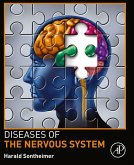Balance Dysfunction in Parkinson's Disease: Basic Mechanisms to Clinical Management presents the most updated information on a variety of topics. Sections help clinicians evaluate the types of balance control issues, dynamic balance dysfunction during turning, and the effects of medication, deep brain stimulation, and rehabilitation intervention on balance control. This book is the first to review the four main postural control systems and how they are affected, including balance during quiet stance, reactive postural adjustments to external perturbations, anticipatory postural adjustments in preparation for voluntary movements, and dynamic balance control during walking and turning.
In addition, the book's authors summarize the effects of levodopa, deep brain stimulation, and rehabilitation intervention for each balance domain. This book is recommended for anyone interested in how and why balance control is affected by PD.
In addition, the book's authors summarize the effects of levodopa, deep brain stimulation, and rehabilitation intervention for each balance domain. This book is recommended for anyone interested in how and why balance control is affected by PD.
- Provides the first comprehensive review of research to date on balance dysfunctions in Parkinson's disease
- Discusses how to translate current neuroscience research into practice regarding neural control of balance
- Provides evidence on the effects of current interventions on balance control
Dieser Download kann aus rechtlichen Gründen nur mit Rechnungsadresse in A, B, BG, CY, CZ, D, DK, EW, E, FIN, F, GR, HR, H, IRL, I, LT, L, LR, M, NL, PL, P, R, S, SLO, SK ausgeliefert werden.









